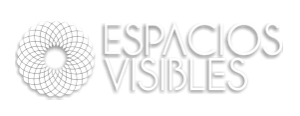While having a degree will help, you can learn to be a UX designer by attending various bootcamps and courses. After that, practice the skills on different UX design projects. Depending on the role and company’s size, the average UX designer salary in the US is around $93,000/year. A more specific role, like user experience researcher, has an even higher wage, averaging $100,000/year.
In the near future, AI will not take over, and designers who code may still be in high demand. For the short term, designers who want to stand out should keep certain basic coding skills such as JavaScript and Ajax in their arsenal. Understanding measurements and code structure, i.e., how pages are displayed, will provide a deeper understanding of the front-end development process. That in turn will cause designers think more deeply about their designs and how to make them more efficient for that process.
Ways to Make Authentication Systems More User-friendly
In the final lesson, you’ll step outside the classroom and into the real world. You’ll understand the role of a UX designer within an organization and what it takes to overcome common challenges at the workplace. You’ll also learn how to leverage your existing skills to successfully transition to and thrive in a new career course ux ui design in UX. In the third and the fourth lessons, you’ll learn about the most common UX design tools and methods. You’ll also practice each of the methods through tailor-made exercises that walk you through the different stages of the design process. In the second lesson, you’ll learn how to think like a UX designer.
Large corporations might have different people working on certain stages, while smaller organizations might hire one designer for all UX design-related tasks. After collecting data, a UX designer analyzes it and defines the goals users want to achieve or the core problems they need to solve. On the other hand, UI design focuses on the visual design and interactive elements of a product, such as colors, layouts, animations, buttons, and typography. User experience design is the process of creating a seamless experience throughout the entire user journey. From the check-in sign at an airport to the ease of finding the checkout button on an eCommerce store, UX design exists in every aspect of our lives.
Classroom Courses
Many soft skills required to succeed in the field are transferable from other professions. User-centered design is an iterative process where you take an understanding of the users and their context as a starting point for all design and development. In user experience, designers do not have much control over a person’s perceptions and responses—the first part of the definition. For example, they cannot control how someone feels, moves their fingers or controls their eyes as they use a product. However, designers can control how the product, system or service behaves and looks—the second part of the definition.
A UX designer must be accomplished in user interface design, information architecture, layout design, and interaction design as well. These all factor into creating a user interface that addresses the identified pain points and is pleasing to the user, both functionally and visually. UX designers and coders have different skill sets and are usually hired accordingly. On the other hand, learning to code only makes you a great asset to any multifaceted team, and you can gain experience that may ultimately drive your career growth. After learning the necessary UX design skills and tools, it’s time to practice them on real projects. We recommend starting with web design first, as it’s relatively easier than game design, voice design, and AR design.
User Experience (UX) Design
However, because they have so much knowledge, they easily wander outside the scope of the product. For example, if you are artistic, know effective color combinations, and understand how products can be visually enhanced, UI design is a good choice for you. While the end product requires consideral input from both design methodologies, the process of designing UI and UX is very different.
A coding designer will be a unique asset to any company and the product team. The whole “should designers learn to code” topic is hotly debated. Though some great designers are also good at coding, many believe that undivided focus on a particular skill, such as web designing, will make a professional stronger. Many also believe that today, being a multi-skilled designer is a big plus, and that there should be nothing in the way of a designer having another useful skill, such as coding, under their belt. The UI, or the “presentation layer” is a designer’s playground, but focusing on that alone is akin to only considering the facade of a building.
Is AI Going to Eliminate Front-end Developers?
The company also offers more specific courses for those who want to be experts in user experience (UX) management, user experience (UX) research, and interaction design. This article will provide the ultimate guide to user experience design, including what is UX design, how it differs from UI design, and relevant career opportunities. In the first lesson, you’ll learn what user experience design is and what a UX designer does. You’ll also learn about the importance of portfolios and what hiring managers look for in them. You will learn to identify the overlaps and differences between different fields and adapt your existing skills to UX design.
Glassdoor includes UX designer as one of the top 50 best jobs in the US, with around 7,000 job openings currently. Once you’ve mastered web design, you can work on other types of projects to gain more experience and diversify your portfolio. In fact, you can even learn about UX design from the very man who invented user-centered design, Don Norman. His company, Nielsen Norman Group, offers a UX Basic Training course which costs $923-$961. Good voice design is not only about using beautiful voices or providing the correct information – it’s about giving the voice a personality as if users were conversing with an actual human.
Apple’s Product Development Process – Inside the World’s Greatest Design Organization
But designers who code, or at least demonstrate deep knowledge of various technologies, will become a great asset to any multidisciplinary team, and it will definitely pay off in the long run. A large section of the design community is locked in debate over whether designers should code. Some favor seeking out the unicorns who can do both, while others claim they don’t exist, or only get in the way.
There are nontechnical jobs that do not require coding or programming skills. In contrast, UI design refers to the visual design of a digital product, such as animations, images, buttons, and other interactive elements. A good user interface makes the whole user experience enjoyable. User experience refers to how a user interacts with a product or service. UX design encompasses all aspects of that experience, including user interface design, usability, and information architecture.
We’ve rounded up the seven most common programming languages that designers will see at work. Understanding how these work will allow you to create better designs and communicate more clearly with your team. To help you understand the role of a developer – and to work alongside them – we’ve compiled a list of the most common programming used by developers.
- In addition, it can improve your communication with other team members.
- A UX designer is concerned with the entire process of acquiring and integrating a product, including aspects of branding, design, usability and function.
- Instead of static interfaces, you’ll deal with constantly changing scenarios.
- The back-end is the part of a website or application that is run on the server.
wordpress theme by initheme.com

